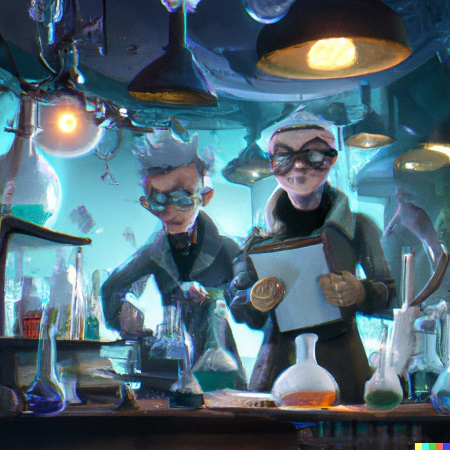
The origin of life on Earth is a deeply fascinating and complex scientific question that has puzzled scientists for centuries. Despite much research and study, the exact details of how life first arose on our planet remain unknown. However, there are several theories and ideas that offer possible explanations for the origin of life.
One of the most widely accepted theories is the “primordial soup” model, which proposes that life began in the oceans, where simple organic molecules were able to combine and form more complex molecules. According to this model, the early Earth’s oceans were rich in chemicals such as methane, ammonia, and water, which were able to react with each other to form simple organic molecules such as amino acids and sugars.
Over time, these molecules were able to combine and form more complex structures, such as proteins and nucleic acids. Eventually, these complex molecules were able to self-assemble into simple cellular structures, which were the first living organisms.
Another theory is the “hydrothermal vent” model, which proposes that life began in the ocean near hydrothermal vents, which are underwater geysers that spew hot, mineral-rich water. These vents provide a unique environment with high temperatures, high pressures, and a rich supply of chemical nutrients, which could have provided the necessary conditions for the emergence of life.
Additionally, some scientists have suggested that life on Earth may have originated from space. This “panspermia” hypothesis proposes that life on Earth originated from microbial life forms that were transported to our planet from elsewhere in the universe. It is possible that these life forms arrived on Earth via comets or meteorites, which could have delivered the necessary organic molecules to the early Earth.
The Miller-Urey Experiment
One of the most famous experiments related to the origin of life is the Miller-Urey experiment, which was conducted in the 1950s by chemists Stanley Miller and Harold Urey. The goal of the experiment was to simulate the conditions of the early Earth and to see if the necessary chemical reactions for the formation of life could occur.
The experiment involved creating a sealed glass chamber that contained water, methane, ammonia, and hydrogen, which were thought to be the main constituents of the early Earth’s atmosphere. The chamber was also fitted with an electric spark generator, which simulated the effects of lightning.

After running the experiment for several days, Miller and Urey observed that a variety of organic molecules had formed in the chamber, including amino acids, which are the building blocks of proteins. This was a significant discovery, as it showed that the necessary chemical reactions for the formation of life could occur under the conditions that existed on the early Earth.
However, the Miller-Urey experiment has also been the subject of much criticism and debate. Some scientists have pointed out that the composition of the early Earth’s atmosphere is not well understood, and the assumptions made by Miller and Urey may not be accurate. Additionally, the experiment only simulated a very limited range of conditions and did not take into account many of the complexities of the early Earth environment.
Despite these criticisms, the Miller-Urey experiment remains an important milestone in the study of the origin of life and continues to be a valuable tool for understanding the conditions that may have existed on the early Earth.
Challenges to the Origin of Life Study
In addition to the various theories and ideas that have been proposed to explain the origin of life, there are also many challenges and criticisms of these ideas. One of the major criticisms is that the conditions on the early Earth were not conducive to the emergence of life.
The early Earth was a hostile environment, with high temperatures, intense radiation, and a lack of oxygen. It is not clear how life could have emerged and survived in such conditions. Additionally, the chemical reactions necessary for the formation of complex organic molecules are not thought to be feasible under the conditions that existed on the early Earth.
Furthermore, even if the necessary conditions did exist and the required chemical reactions were possible, it is not clear how these simple molecules could have self-assembled into the complex structures necessary for life. The process by which non-living molecules become living organisms is not well understood, and many scientists believe that it may be impossible for this to happen through natural processes alone.
Additionally, some scientists have pointed out that the “primordial soup” model and the “hydrothermal vent” model are based on a limited understanding of the conditions on the early Earth. These models may be oversimplified and do not take into account many of the complexities and uncertainties of the early Earth environment.
In conclusion, while the exact details of the origin of life on Earth remain unknown, there are several theories and ideas that offer possible explanations. These include the primordial soup model, the hydrothermal vent model, and the panspermia hypothesis. Despite the challenges, the study of the origin of life is a fascinating and active area of scientific research, as scientists continue to search for answers to this enduring mystery.
This essay was created by ChatGPT and the images by DALL-E 2. Edited by Omri Shabath.



